This document has been completely updated for 2023 and beyond!
You’ve earned some leisure time on your yacht. Or maybe, you’re in charge of a larger vessel and you have a responsibility to make sure your guests are entertained. Either way, you’ve probably put in an expensive satellite system some time in the last ten years, and you’d like to make sure that it’s there for you for the next ten years. That’s why it’s important to look at the ugrades you’ll need to keep the TV signal coming as you sail along.
This document is available in PDF format Download it now!
Upgrading to HD
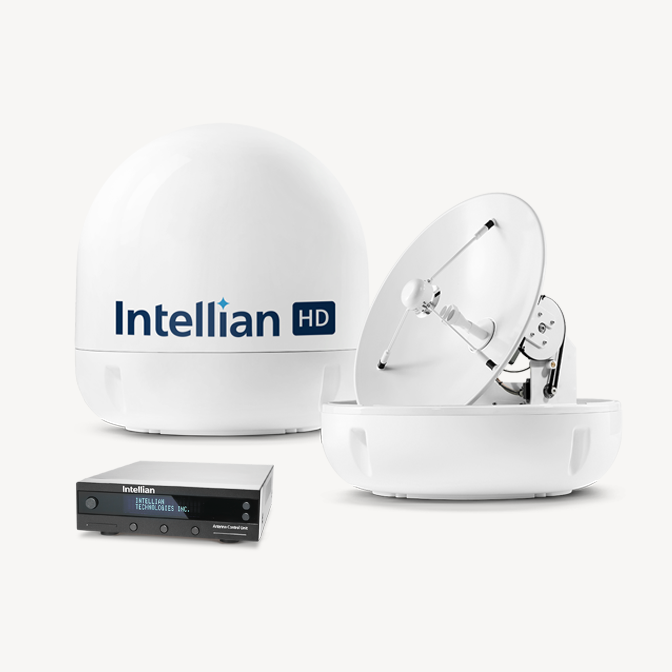
The first marine satellite systems were standard-definition only. This was common all the way until the mid-2010s. DIRECTV started removing standard definition channels from its satellites in 2016, and that process continues to this day. As a result, more and more vessels are switching to HD systems.
At first, it was impossible to provide quality HD on a moving vessel and for a long time it was just too expensive. HD systems have come down in price somewhat… and while they’re still not cheap it is possible to put in a quality system for well under $20,000. That’s a lot for a small craft but for a really large one, it’s all part of the budgeted improvements. If you have a yacht, work boat, or cruise ship that’s used for commercial purposes, you know that this level of cost isn’t really a big hurdle.
The top of the line here is Intellian’s s6HD. It can lock onto all three major DIRECTV satellites while in motion, and while satellite service isn’t guaranteed in the choppiest seas, it does an excellent job on the open water. It’s designed for US DIRECTV service, but will also work with some international services and DISH in the US. If you opt for a different satellite carrier, you will also need to get satellite receivers and an account for every country. Unfortunately Solid Signal can only sell US DIRECTV equipment because the FCC bans importation of other countries’ equipment.
Note: The s6HD is a SWM-only dish and cannot be used with older multiswitches at all. It also requires its own upgrade kit for 32 receivers instead of using external multiswitches. The s6HD should be used as part of a full refit rather than an upgrade.
The infrastructure you need
DIRECTV’s SWM technology is different from other satellite systems you may have used in the past. Whereas in the past, you needed a single line back to the closet for each receiver, with SWM you can use special splitters to run a single line to another part of the boat. You can then split off that line to feed up to 8 receivers at one time.
Tuner Math
In order to know how to plan your system, you need to understand “Tuner Math.” DIRECTV’s SWM system does not count the number of actual receivers you have. It counts tuners. In a commercial installation, these are generally the same since you’re limited to using regular satellite receivers in public areas. However, if you do use a DVR in a private area you need to be aware that it takes 2 tuners in the SWM infrastructure.
If you are using the built-in multiswitch in the s6HD, you can feed a total of 13 tuners. That means 13 receivers, or (for example) four DVRs plus five receivers. Because each DVR counts as two tuners, the four DVRs count as eight tuners.
Switching over to the new infrastructure
Generally, you’ll find that wiring for a SWM system is easier, especially in the cramped areas of a boat. You can use less wire by running a single line to another part of the ship and then splitting off from there. This should allow you to pull out a decent amount of cable. You can reuse old cables as long as they are made to the RG6 standard with a solid copper center conductor. It’s sometimes a good idea to leave a spare line in the conduit because a broken line will affect more than one receiver. With a spare in the wall you can deal with any contingency that comes up.
What if you want to stay with the old wiring scheme?

Most vessels outfitted in the 2000s use large Spaun multiswitches. These were the gold standard at the time for commercial installations, but Spaun has ceased operations. It’s sometimes possible to find old stock of Spaun products but at this time these items will be fairly old and may be unreliable. While there is no direct replacement for these old products, Televes’ Nevoswitch will generally work in most cases.
If you want to stay with the older wiring scheme, your Signal Connect tech expert can recommend a satellite system that will work for you. Generally you’ll sacrifice the ability to watch most programs in high definition and you will be limited to using DIRECTV’s H24 commercial receiver which is older and slower than the current generation of DIRECTV products.
Get to know the SWM Multiswitches
The s6HD unit has its own multiswitch built in which is designed to service up to 8 tuners (usually 8 receivers. However, if you choose to upgrade using Intellian’s kit, you will be supplied with SWM-30 multiswitches. These are the same units that are used in regular commercial installations.
SWM-30 Digital Single Wire Multiswitch
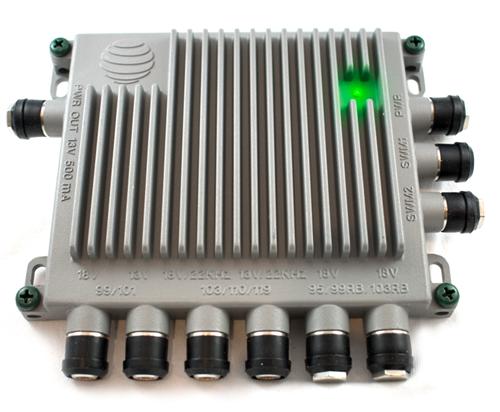
The SWM-30, also known as the DSWM30, is the current generation DIRECTV multiswitch. In most installations, it will support two banks of 13 tuners each, 26 tuners in total.
It is possible in some cases to find other multiswitches on the secondary market such as the older SWM-8 and SWM-16 multiswitches. There’s really no benefit to using these older products, and since they have not been made in over a decade, they will be far more likely to fail. That’s the last thing you need when you’re out on the water.
SWM-30 HP Digital Single Wire Multiswitch
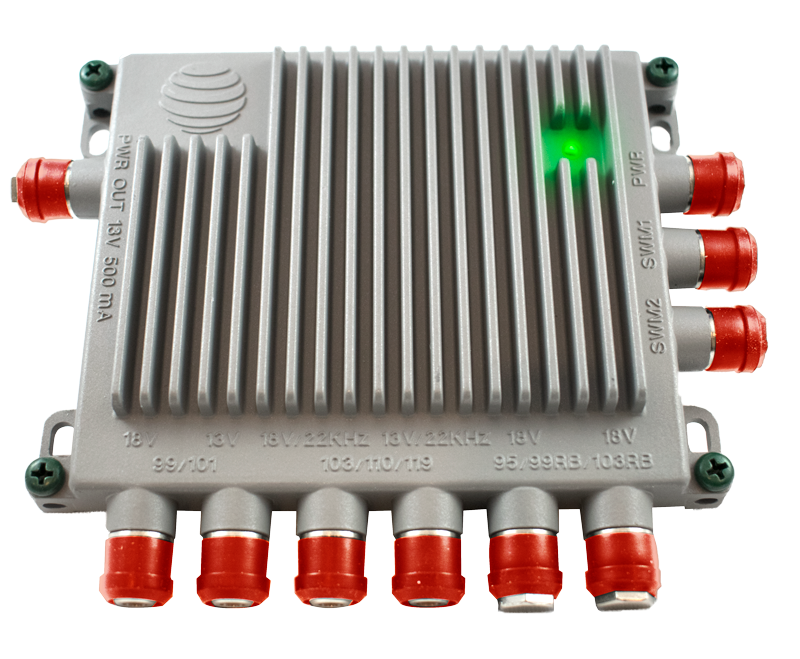
If you are running lines that are more than 150 feet, you may want to consider the SWM-30HP multiswitch. This is a special version of the SWM-30 that has about 100x the output power of the regular SWM-30. It isn’t designed for residential use because it could overload a receiver potentially causing permanent damage. However, when used in a commercial environment, it allows longer runs than the standard SWM-30, or allows the use of RG-59 cable instead of RG-6, which is important when working with existing cable.
The SWM-30 HP has red-orange weather boots. Do not use it in smaller-sized installations where it can damage other equipment. In general, this multiswitch should not be installed by anyone but a trained technician who can measure signal levels safely before connecting receivers.
Powering a SWM Multiswitch
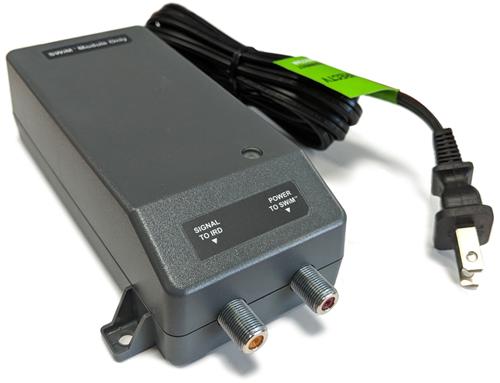
The PI-29Z power inserter is the only way to power a DIRECTV multiswitch. Any LNB with a single wire out, or any external SWM multiswitch, requires power to work. The power inserter is connected to the dedicated PWR port The PI-21 power inserter, which is black instead of grey, should no longer be used.
Distribution
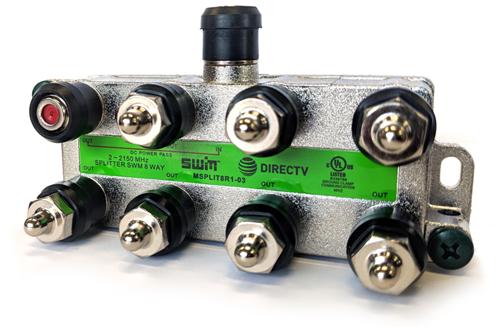
Unlike older multiswitches, SWM systems can use splitters that can be located anywhere in the run. It may be helpful to run a single line to a common area and split the cable from there, rather than running lines from every room to the closet. However, if you already have existing cabling, splitters can be used within the closet itself.
It is imperative that the proper splitters be used in order to accommodate the specific upstream and downstream frequency needs of SWM distribution. The MSPLIT2, MSPLIT4, and MSPLIT8 splitters are designed for SWM distribution and are perfect for this use. Splitters may be cascaded if particular care is used to avoid excessive losses and keep the signal level higher than -55dBm at the receiver.
SWM distribution tends to have a slightly shorter maximum run than the distribution systems used in past years. In general 250 cable-feet is a good rule of thumb for planning purposes; the use of smaller splitters and the extra power from the SWM30HP can extend runs to 300 feet. Beyond this point, you can use the SWM-30HP multiswitch to increase the distance, Care should be taken with this multiswitch to make sure that the signal level at the receiver is lower than -45dBm.
Powering your Equipment
A lot of larger boats are designed to provide 220 volt power instead of the 110 volt power used in the US. There is no approved power supply for DIRECTV equipment that will run on 220. Some older DIRECTV receivers do have multi-voltage power supplies, but for the most part your best option will be to use a high-quality inverter capable of running 24 hours a day.
Measurement
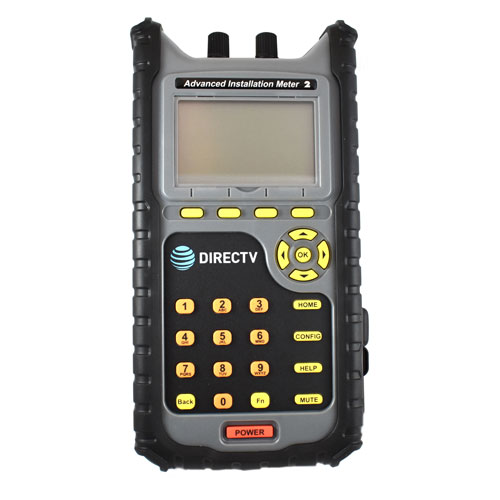
A good satellite meter is critical to any successful installation, and a professional should never depend on the signal meters built in to a DIRECTV receiver. Inexpensive signal finders do not work with SWM distribution, so it’s best to get the meter you’ll need.
DIRECTV’s AIM meter is the only meter that works properly with DIRECTV signals. Because signal problems will almost always happen while you’re out at sea, it’s a smart idea to have this meter on hand for when it’s needed.
In an emergency, DIRECTV’s own receivers can be used to get some information from the satellite system, but this can be time-consuming and will not give you actual signal strength. Instead you’ll get a measure of signal quality which is intended for regular homeowners to understand whether or not they have signal loss.
Installation Diagrams
S6HD-InstallClick here to download this diagram.
S6HD-Install-2Click here to download this diagram.
Choosing the right receiver

There is really only one clear choice for commercial DIRECTV receiver in 2023. It’s the receiver shown at right, the H44 Commercial Receiver from DIRECTV. The H44 is DIRECTV’s latest commercial receiver in 2023, although a newer receiver is expected to be available in 2024 which will offer the same performance in a slightly smaller package.
DIRECTV’s H25 and H24 Commercial Receivers are still available in limited quantities, but should only be used to replace existing receivers of the same model and type. The H25 and H24 have been out of manufacture since the early 2010s and all receivers today have gone through refurbishment at least once. While they are durable and reliable receivers, all are past their expected service lives.
The H24 receiver may be used with older, non-SWM systems as a replacement for even older receivers if needed. However, it’s best to get futureproof as soon as possible and we are already long past the time when non-SWM receivers and distribution systems were fully supported by DIRECTV.
One last tip
Because you’ll likely be underway when something fails, it’s a good idea to have extra power supplies on hand. These items take up very little space and can be swapped in by someone with very little experience.
The SWM multiswitch uses the PI-29Z power inserter. The H44 Commercial Receiver uses the EPS44 power supply. The H25 Commercial Receiver uses the EPS10 power supply. The H24 Commercial receiver has a built-in power supply that cannot be replaced.
All these replacement power supplies, as well as all the parts in this document, are available at Solid Signal. Call 888-233-7563 for more information.

